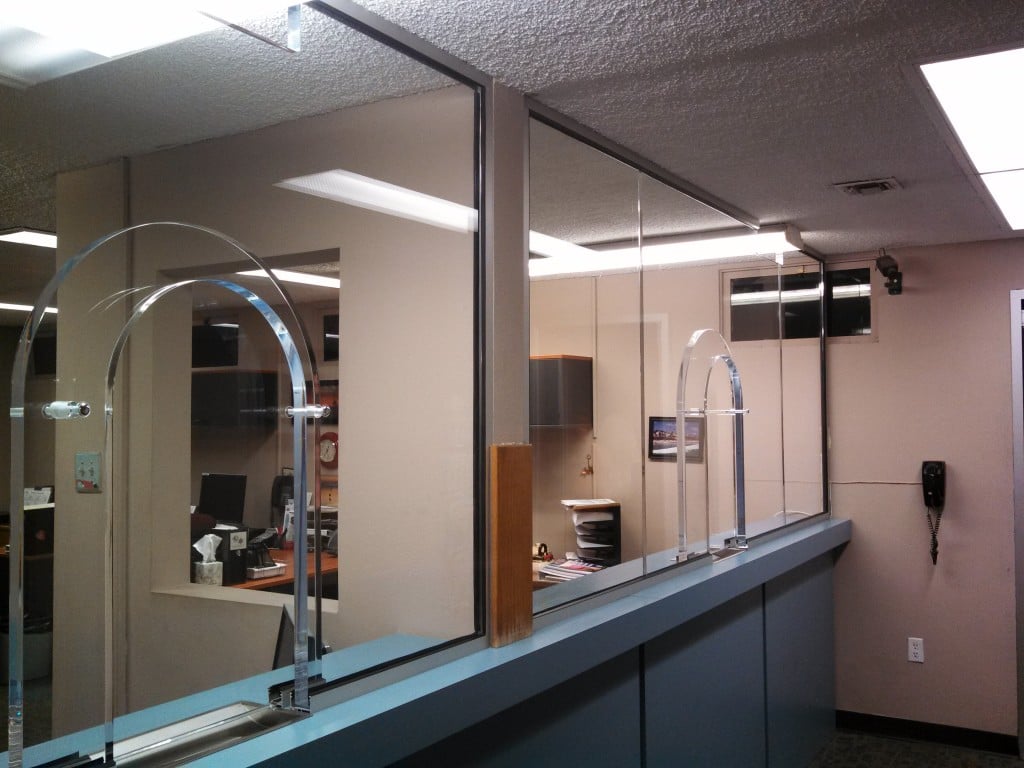If you live in the Detroit area, you probably remember the horrific shooting that happened inside the lobby of a police station in the city’s 6th Precinct in January 2011. In this situation, a gunman walked into the lobby and shot at the police officers standing behind the front counter with a sawed off shotgun. The shooter then hopped over the desk where he began to shoot at officers at point blank range. Before being shot dead, the shooter, 38 year-old Lamar Moore, injured four officers…who all survived the attack. Then Police Chief Ralph Godbee called the situation a “teachable moment” and called for a change in security policies. He decided to release the video of the shooting to make the public aware that safety should be on everyone’s mind, even in a place like a police station that is filled with people who are paid to protect the public.
When assessing the protection levels of a police precinct, you want to treat the initial plans like you would the plans for securing a school or a municipal complex. If the police station is a new construction, it’s important to work with a trusted bullet resistant barrier expert before breaking ground on the project so they can anticipate any potential issues with the overall building design and help you avoid costly changes to your construction plan.
If you’re upgrading a building and need to retrofit a custom bullet resistant barrier system into the current design, there are several factors to consider when working on assessing the type of security you need.
3 Considerations for retrofitting a police station with a bullet resistant barrier system
- Preserving aesthetics: First, determine how much of the old police station building design you want to retain. In the case of the recent $61 million renovation of the Central Park Precinct in New York City, the architect involved with the project made several building upgrades (including a glass atrium partially filled with bulletproof glass), but wanted to keep the historic building as intact as possible due to its historical significance to the city of New York. Second, you’ll need to strike a balance between ensuring safety while still maintaining an inviting environment for employees, crime victims, and other visitors.
- Fortifying weak points: Contrary to popular belief, you don’t really need to make sure every door and window in the police station is protected – this is neither practical nor cost effective. Instead, focus your attention on heavy traffic areas within the precinct like entrances, transaction windows, the lobby, and other main access points. Securing these areas with bulletproof glass, frames, and ballistic doors will go a long way to keeping the people inside the police station safe.
- Selecting appropriate protection level: One area of misconception when quoting out a police station job that includes a bulletproof glass element is the appropriate UL security level your glass should have. The assumption here is that since a police station is a high traffic building that could be a magnet for crime, you’ll need a higher rated pane of glass. Total Security Solutions has seen several job spec sheets come in where the proposed level was 5 or higher. That level of security is really only required for government buildings and embassies. The appropriate level of protection for a police station is Level 3. You could increase the security to as high as Level 4, but at that point, you’re just increasing the cost of your job. Remember, the main job of your system is to act as a deterrent. Over 90% of the systems Total Security Systems have installed have never been shot at.
Next Steps
- Download our Security Checklist for Municipal Buildings.
- Read our blog for other great tips and information
- Sign up for our mailing list
- Request a free phone design consultation


